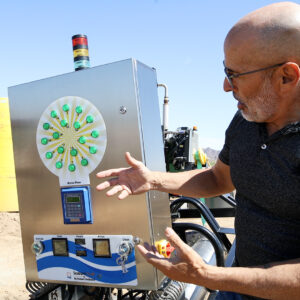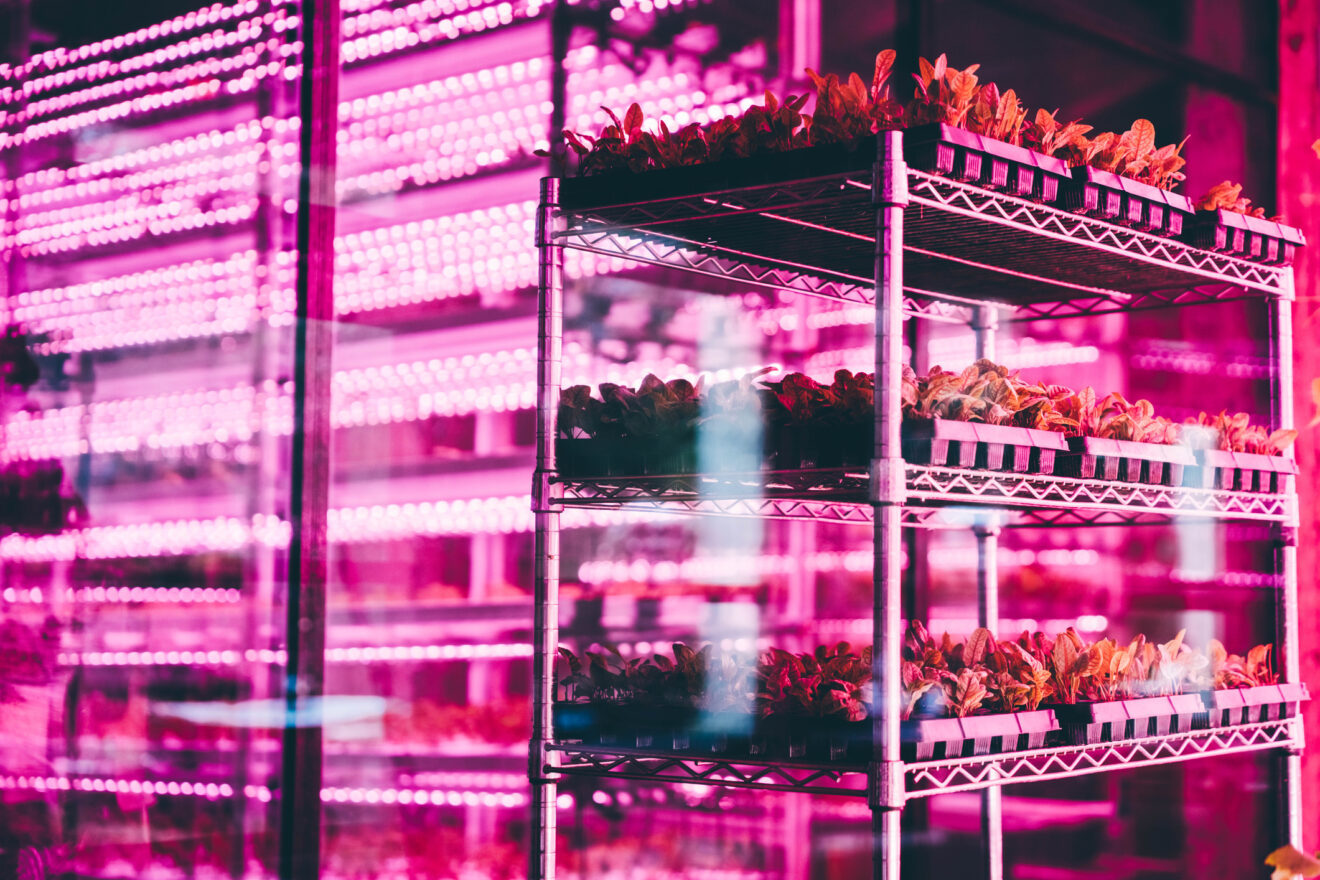Twice a week, in the middle of the night, a team of scientists and researchers from the University of Florida shine ultraviolet light on a field of strawberries. The technique isn’t necessarily to help the plants produce more or larger berries but rather to kill the eggs of twospotted spider mites that can lead to fruit loss for the crop, which has an annual worth of just under $400 million in the state and accounts for 10% of the country’s strawberry value overall.
“Since very few miticides (sprays) are currently effective in suppressing twospotted spider mites in strawberries, the use of UV light provides an effective physical control method that can be used in fields and in high-tunnel strawberry production systems,” study lead Sriyanka Lahiri, assistant professor of entomology at the University of Florida’s Institute of Food and Agricultural Sciences’ Gulf Coast Research and Education Center, said in a news release regarding the research. “If left unmanaged, this pest will feed voraciously on leaves and cover the plant with webbing, causing tremendous fruit loss.”
In addition to killing the eggs without reducing the number of strawberries produced, the lights do not deposit any damaging residues on the plants, making it another viable tool in farmers’ arsenals to combat pests and disease, the researchers said.
UV-cleaned water

Scientists are increasingly using ultraviolet light to aid in food production and safety from farm to table. Yuma, Ariz.-based 210 Companies (formerly Ag Partners Southwest) has developed a system to treat irrigation water used on produce crops by means of ultraviolet light – a physical disinfection method that is safer, less complex to operate and that could potentially enhance operations better than chemical options, such as chlorine. 210’s Sunburst for field irrigation system connects to an irrigation system’s mainline and is powered by an AC generator.
“It was obvious that leafy green growers had to comply with the requirements of the food safety metrics, and we were determined to help our customers as best we could so ultraviolet, used since the 1900s, seemed a viable option,” Paul Mondragon, 210 Ag founder, owner and designer told SmartBrief. “But apparently, nobody had done it on a small scale so we felt extremely challenged by this need. Within two years, we had our prototype tested, production ensued, and we began to push the Sunburst line into the market. It has been an alternative option to those who do not want to be bound to chemical-only options.”
What led Mondragon to consider ultraviolet light was the fact that the technology was available for municipalities, wastewater, and aquatics but did not seem to be available, small scale, for portable agriculture, he said.
“Due to it being deployed for so many years and within those other sectors, the viability of ultraviolet already had a proven record so implementation across and into a new industry was only natural,” Mondragon said.
After trialing a variety of other options – including chlorine, sodium hypochlorite and peroxyacetic acid – neighboring leafy greens producer JV Smith Companies decided to try 210’s ultraviolet technology. Chief Agriculture Officer Matt McGuire said the process is ideal because of its safety and ability to not negatively affect the soil or product.
“It’s nontoxic for soil health and easy to use,” McGuire told Growing Produce. “It’s not affected by sediment or pH. It worked great.”
From pasteurization to raslysation
Denmark-based Lyras has created a non-thermal process called raslysation that uses ultraviolet light to kill harmful pathogens in milk while also preserving key nutrients and flavor. The process can also be completed with significant energy and water savings compared with pasteurization techniques, according to Lyras CEO Rasmus Mortensen, saving about 572 tons of CO2 annually.
“Raslysation uses a UV light source combined with a light filter that concentrates a specific type of UV light,” Lyras’ website. “The liquid is directed past the light source in a controlled movement so that the entire liquid is illuminated. This technique effectively inactivates microorganisms. At the same time, more of the natural taste, vitamins and proteins are preserved.”
The raslysation process can treat just under 12,000 gallons of industrial enzyme liquid per hour, Lyras claims, and, in addition to milk, can also be used as a substitute for pasteurization in juice, tea, whey, brine and other liquids.
The future of UV light in food production and safety
Scientists from Hokkaido University’s Engineering and Agriculture schools in Japan and the university’s Institute for Chemical Reaction Design and Discovery have created thin-film coatings that can convert ultraviolet light into red light to boost plant production times – a move that could help farmers in colder climates and, someday, even be used to fill food security gaps in some parts of the world.
Read more like this from SmartBrief:
- Food retailers infiltrate new categories with private-label products
- What’s the big deal with small-format retail?
- SmartSummit: Transformative technology trends and innovations in grocery retail
